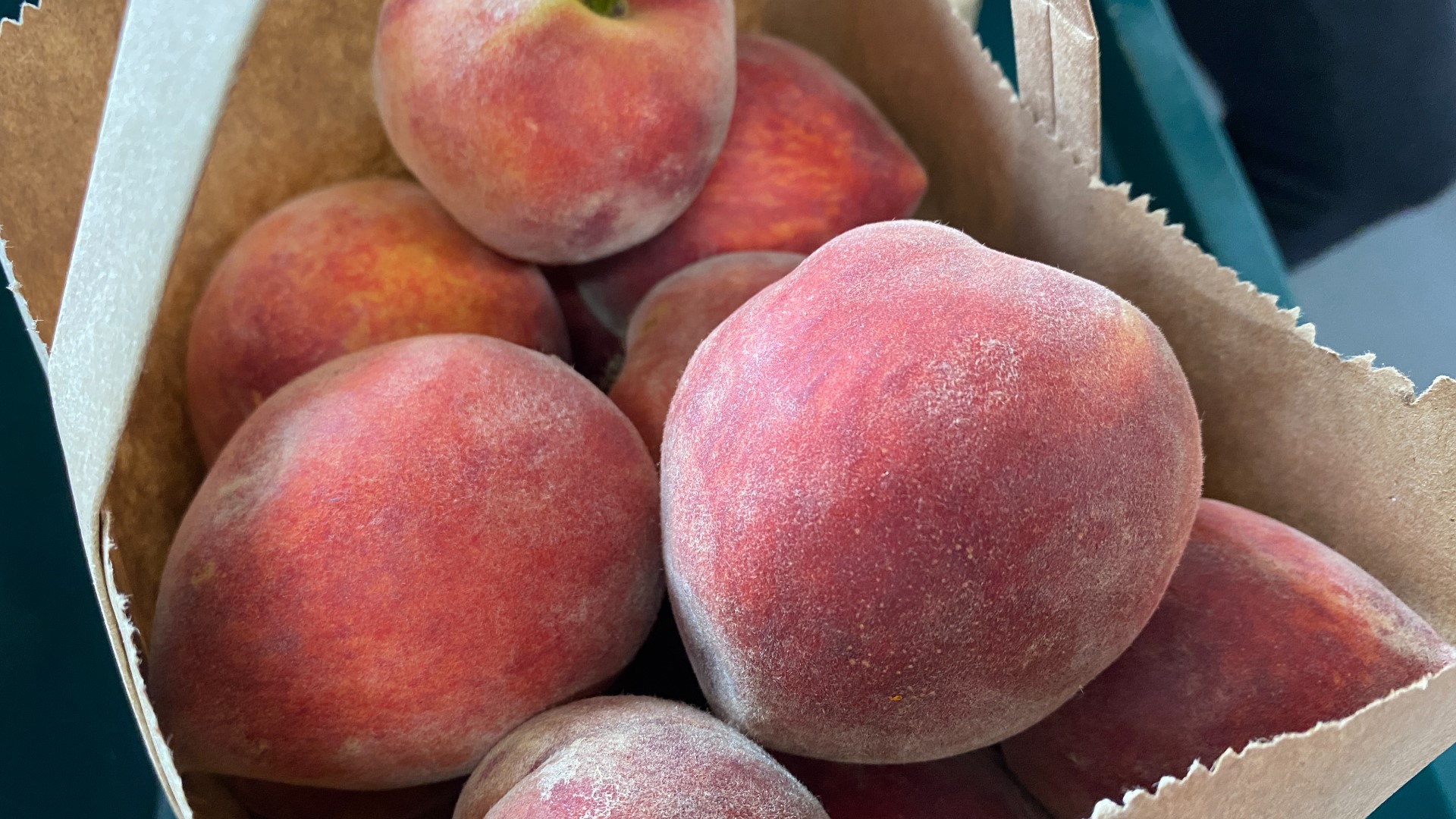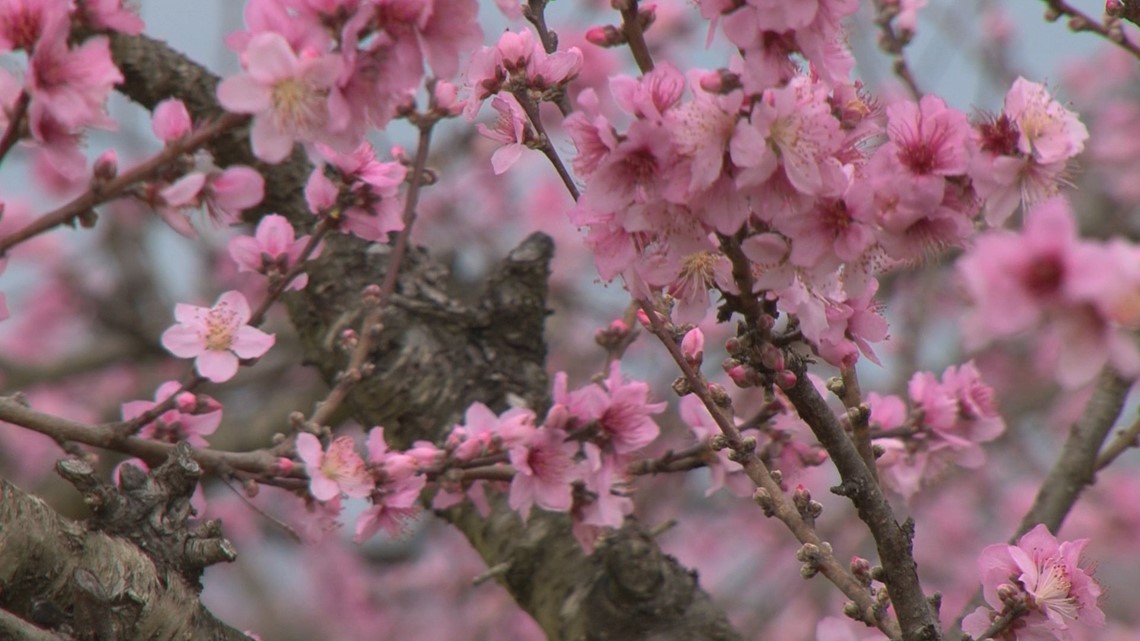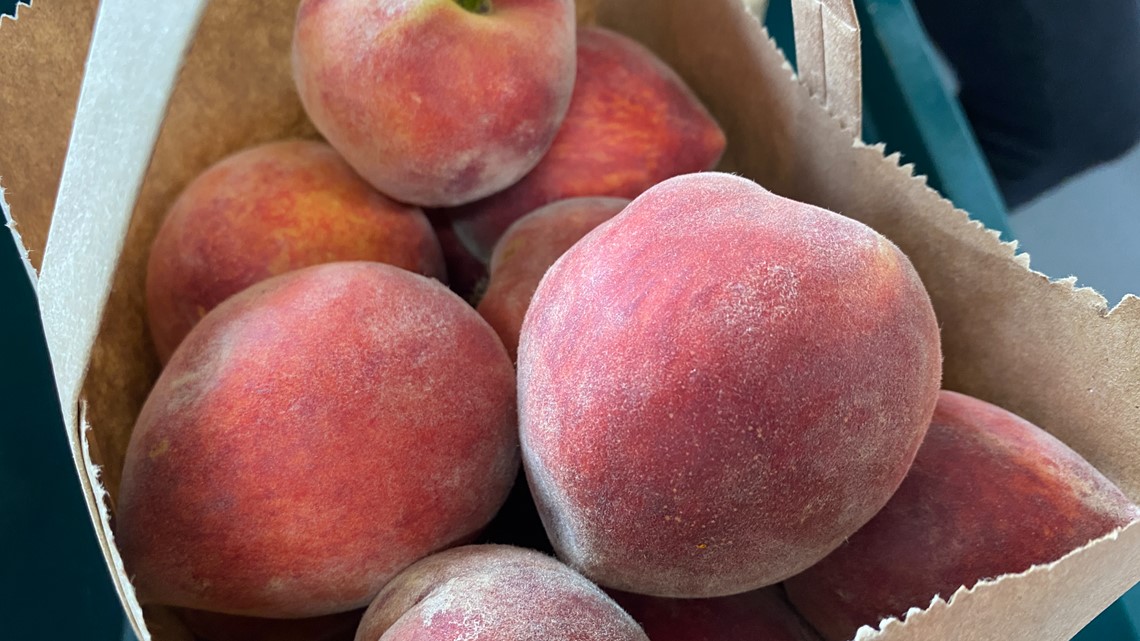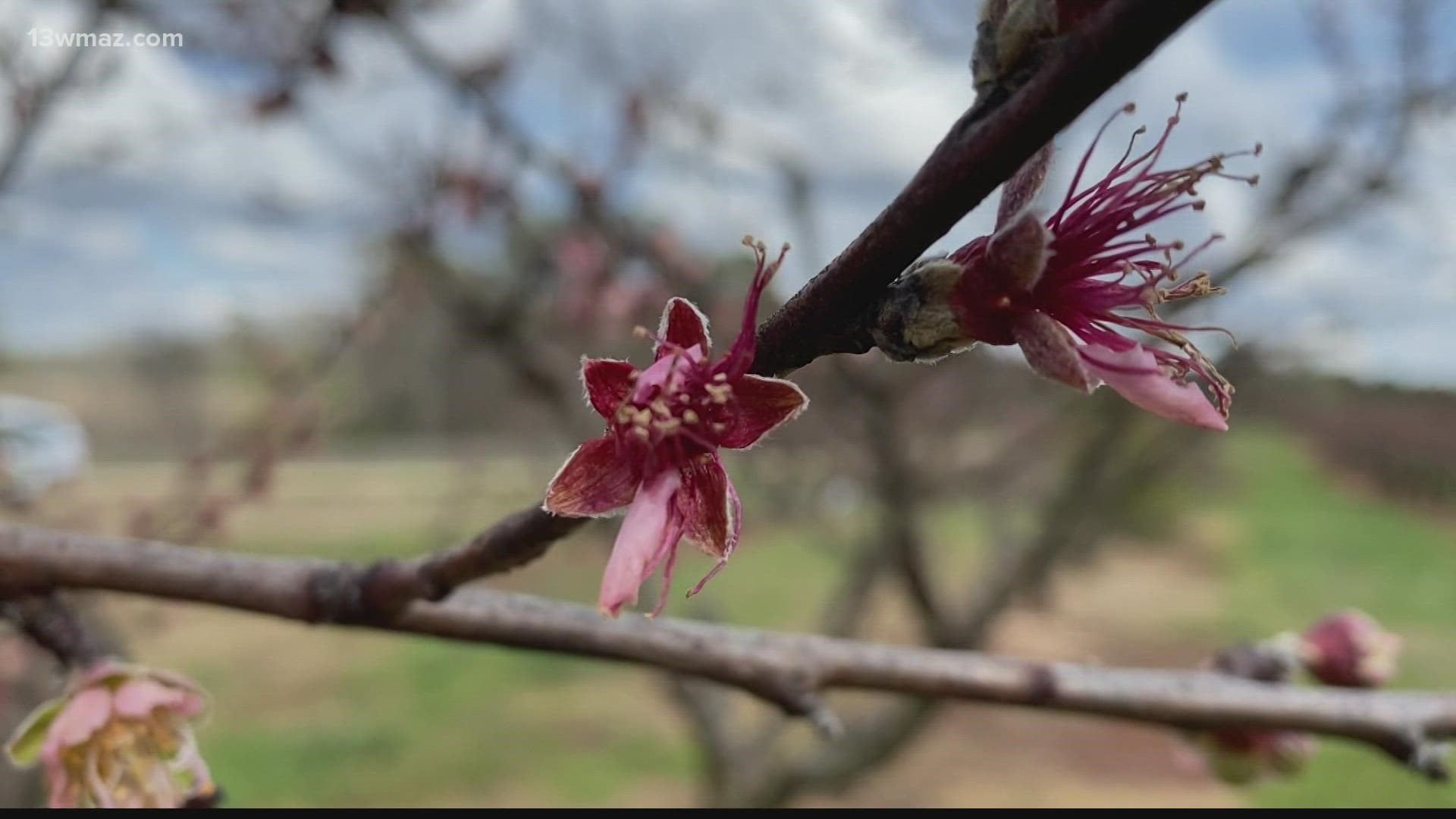'Shortest peach crops in almost 30 years' | The State of Georgia's Peaches was gloomy last year
Meteorologist Jordan West talks with a local peach farmer about why Georgia's peach crop was soured last year, and what we can expect in the future.

A Year Without Peaches
While peaches account for less than 1% of Georgia's agricultural output, the importance of peaches in Georgia goes beyond their economic value. They play an important role in shaping the state's history, culture and identity.
However, in 2023, things for Georgia peach growers were... a little peachy.
"We ended up with one of the shortest peach crops in almost thirty years," according to Lee Dickey.
The Dickey family has harvested peaches in Crawford County for over 125 years. They are peach experts, but despite their years of experience, they can't control Mother Nature.
After a late freeze, Dickey Farms lost about 90% of their peach crop.
In response to the deep freeze, natural disaster declarations were issued for 18 counties across Georgia.
Those declarations are more than just a symbolic gesture. It allows those counties to receive loans from the U.S. Department of Agriculture, propping up farmers and helping them survive the grim harvest.
That's important because the freeze led to the actual harvest being a fraction of the total crops planted. For farmers, that means dollars and cents.
"We had about 10% of our crops... we didn't ship any peaches to grocery stores... People were able to come here and get peaches that they want... more expensive certainty," Dickey said.
Building trust in the farming industry is vital. Without a peach supply, many grocery stores went without peaches or maybe found a different supplier.
"Kroger for example... they love buying Georgia peaches.... They understand they are having the conversation... they can see what's going on," Dickey said. "But there are other customers, they may be less forgiving."
A peach's lifecycle
While dormant in their tiny pods, peaches are not only protected from cold weather, but they need it.
"Peaches need a certain amount of dormancy, and we will measure that in chill hours," Dickey said.


The amount of chill hours varies for different types of peaches.
If peaches don't get enough chill hours, it could lead to poor fruit development, size, sweetness and resilience. But this year that wasn't the problem.
Once they get enough chill hours, the peach trees will blossom in the warmth between March and April. However, the peach blossoms bloomed earlier than usual.


"We were worried with the early bloom, because once they bloom like that, you are kind of at risk. Blooms can generally survive 28 degrees. It ended up being kind of two or three nights in a row, and I think by that third night it was so hard to find some live fruit on the trees and there's no second bloom," Dickey said. "It's one take."
However, if these blossoms survive the cold weather, peaches will form.


These issues are the reason why the peach crop has long been volatile and known for its ability to sour.
But with peaches' monumental place in Georgia's image, when the crop flourishes, its a sweet note for an industry known for its resilience and its ability to overcome challenges.

